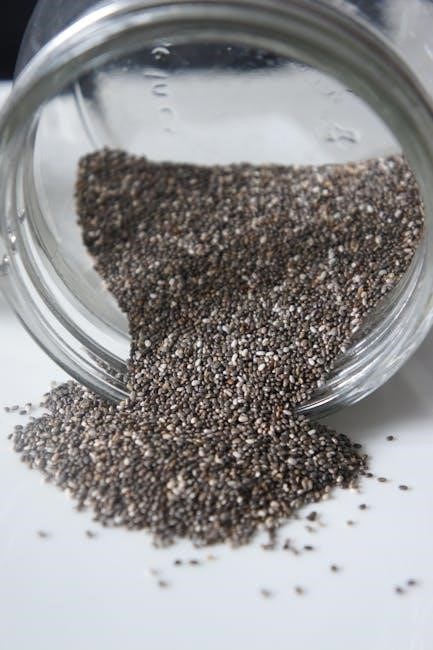ASME B31․3 PDF: An Overview
ASME B31․3 serves as an international piping code‚ crucial for process piping systems․ It outlines design‚ fabrication‚ installation‚ examination‚ testing‚ and maintenance standards․ The PDF version offers accessible guidelines for engineers and professionals․
What is ASME B31․3?
ASME B31․3‚ also known as the Process Piping Code‚ is an American National Standard that sets forth engineering requirements for the safe design‚ materials‚ fabrication‚ construction‚ examination‚ inspection‚ and testing of piping systems․ It is a comprehensive document developed and maintained by the American Society of Mechanical Engineers (ASME)․ This code applies to piping systems typically found in chemical‚ petroleum‚ pharmaceutical‚ textile‚ semiconductor‚ cryogenic‚ and associated processing plants and terminals․ It provides rules and guidelines for piping typically found in power generation‚ pulp and paper‚ and food processing․ ASME B31․3 ensures piping systems are designed and built to withstand pressure‚ temperature‚ and other operating conditions․ It helps prevent failures‚ protecting personnel‚ equipment‚ and the environment․ It is a key resource for engineers and professionals involved in process piping design and maintenance․
Scope of ASME B31․3
The scope of ASME B31․3 encompasses piping systems that handle various fluids‚ including chemicals‚ petroleum products‚ natural gas‚ and slurries․ It applies to piping within the property limits of processing plants‚ refineries‚ and similar facilities․ The code addresses piping systems that are typically subjected to high pressures and temperatures; It covers all aspects of piping‚ from design and material selection to fabrication‚ installation‚ examination‚ and testing․ Specifically excluded from ASME B31․3 are certain types of piping‚ such as boiler external piping covered by other ASME codes‚ plumbing‚ and fire protection systems․ The code provides guidelines for both metallic and nonmetallic piping systems․ It is intended to be used in conjunction with other applicable codes and standards․ ASME B31․3 aims to ensure the safe and reliable operation of process piping systems․ It is widely recognized and adopted by industries worldwide․

Key Aspects of ASME B31․3
Key aspects of ASME B31․3 include design requirements‚ materials and components specifications‚ fabrication and installation procedures‚ and examination and testing protocols․ These elements are essential for ensuring the integrity and safety of process piping systems․
Design Requirements
ASME B31․3 outlines comprehensive design requirements for process piping systems‚ covering aspects such as pressure design‚ stress analysis‚ and flexibility․ These requirements ensure the piping system can safely withstand operating conditions․ Considerations include internal and external pressures‚ thermal expansion‚ and applied loads․ The code provides formulas and guidelines for calculating minimum wall thickness‚ selecting appropriate materials‚ and designing supports․
Furthermore‚ the design must account for potential corrosion‚ erosion‚ and other forms of degradation․ Specific requirements address special components like expansion joints‚ bellows‚ and flexible hoses․ The code also mandates considerations for seismic loads and other environmental factors․ Adherence to these design requirements is crucial for preventing failures and ensuring the long-term reliability of the piping system․ Proper design is a fundamental aspect of maintaining safety and operational efficiency in process plants․ The design phase is very important․
Materials and Components
ASME B31;3 specifies requirements for materials and components used in process piping systems‚ ensuring suitability for intended service conditions․ The code references various material standards‚ including ASTM‚ ASME‚ and API‚ defining acceptable material properties and manufacturing processes․ Material selection must consider factors such as temperature‚ pressure‚ corrosion resistance‚ and compatibility with the process fluid․
Components like pipes‚ fittings‚ flanges‚ valves‚ and bolting must conform to specified dimensions‚ pressure ratings‚ and material requirements․ The code provides guidelines for selecting appropriate components based on design conditions and service requirements․ Special attention is given to welding materials and procedures to ensure joint integrity․ Non-metallic materials are also addressed‚ with specific requirements for their use and application․ Compliance with these material and component requirements is essential for maintaining the safety and reliability of process piping systems‚ and for avoiding any future problems․ Only correct materials should be used․
Fabrication and Installation
ASME B31․3 provides comprehensive requirements for the fabrication and installation of process piping systems‚ ensuring structural integrity and safe operation․ Fabrication processes‚ including cutting‚ bending‚ welding‚ and forming‚ must adhere to specified procedures and quality control measures․ Welding is a critical aspect‚ with detailed requirements for welder qualifications‚ welding procedures‚ and inspection methods․ The code emphasizes proper alignment‚ fit-up‚ and joint preparation to achieve sound welds․
Installation practices cover pipe support‚ alignment‚ and joining techniques․ Piping systems must be adequately supported to prevent excessive stress and vibration․ Clearances and accessibility for maintenance and inspection are also important considerations․ Specific requirements address bolting procedures‚ gasket selection‚ and flange alignment to ensure leak-tight connections․ Hydrostatic or pneumatic testing is typically required after installation to verify system integrity․ Compliance with these fabrication and installation requirements is crucial for preventing failures and ensuring long-term reliability․ Only skilled workers can perform these procedures․
Examination and Testing
ASME B31․3 mandates rigorous examination and testing protocols to verify the integrity of process piping systems․ Examination methods include visual inspection‚ non-destructive testing (NDT)‚ and other techniques to detect flaws or defects in materials and welds․ NDT methods such as radiography‚ ultrasonic testing‚ and magnetic particle inspection are commonly employed to assess weld quality and identify subsurface imperfections․ Acceptance criteria for examination results are clearly defined in the code․
Testing requirements typically involve hydrostatic or pneumatic testing to verify the system’s ability to withstand design pressures․ Test pressures‚ durations‚ and acceptance criteria are specified to ensure that the piping system is leak-tight and structurally sound․ In some cases‚ leak testing using tracer gases or other methods may be required․ Detailed documentation of all examination and testing activities is essential to demonstrate compliance with ASME B31․3․ These rigorous procedures are critical for ensuring the safety and reliability of process piping systems․

Updates and Revisions
ASME B31․3 undergoes periodic updates and revisions to incorporate new technologies‚ materials‚ and industry best practices․ These revisions ensure the code remains current and reflects the latest advancements in process piping design and safety․
ASME B31․3-2020 and Changes
The ASME B31․3-2020 edition brought several key changes to the process piping code․ These revisions aimed to enhance clarity‚ improve safety‚ and address emerging industry needs․ Key updates included modifications to design requirements‚ material specifications‚ and examination procedures․ The 2020 edition also incorporated new interpretations and clarifications based on user feedback and industry experience․
One notable change involved updates to welding requirements‚ ensuring greater weld integrity and reliability․ Additionally‚ revisions were made to address specific applications and operating conditions․ These changes reflect ASME’s commitment to maintaining a relevant and comprehensive standard for process piping․ Users should consult the official B31․3-2020 document for detailed information on all revisions․

Resources and Access
Accessing ASME B31․3 PDF resources is vital for proper application․ Resources include the official ASME website‚ where the PDF can be purchased‚ and committee pages offering updates and errata notifications for users․
Downloading ASME B31․3 PDF
Obtaining the ASME B31․3 PDF is crucial for professionals needing to adhere to process piping standards․ The primary source for downloading the official ASME B31․3 PDF is through the ASME’s official website․ Previously purchased ASME codes and standards PDFs’ links might have been updated automatically․
Ensure you’re accessing a legitimate source to avoid outdated or incorrect information․ Free downloads from unofficial sources may not be reliable․ Purchasing directly from ASME guarantees you receive the most current and accurate version‚ complete with any addenda or interpretations․ This ensures compliance with the latest industry practices and regulatory requirements․
Always verify the publication date and any revisions before utilizing the document for design‚ fabrication‚ or inspection purposes․
ASME B31․3 Committee and Updates
The ASME B31․3 code is maintained and updated by the B31 Committee‚ ensuring the document remains current with industry best practices․ The 831 Committee Page‚ found at http://go․asme․org/831committee‚ serves as a central hub for accessing information related to each code and standard․
Staying informed about revisions is crucial for professionals․ The ASME B31․3 committee releases updates to address changes in technology‚ materials‚ and safety considerations․ Users have the option to receive email notifications when errata are posted‚ ensuring they stay informed on any immediate changes․
Regularly reviewing the updates and revisions is essential for compliance and effective application of the code in process piping design‚ fabrication‚ and maintenance․ By subscribing to updates‚ you are ensuring access to the latest interpretations and clarifications․

Applications and Usage
ASME B31․3 finds application across industries‚ ensuring safety and reliability in process piping․ Los Alamos National Laboratory (LANL) utilizes it‚ highlighting its importance in high-tech environments and critical infrastructure projects․
Application at Los Alamos National Laboratory (LANL)
At Los Alamos National Laboratory (LANL)‚ the ASME B31․3 code is crucial for maintaining the integrity of process piping systems․ LANL’s Engineering Standards Manual PD342 references ASME B31․3‚ highlighting its importance in laboratory operations․ This code governs the design‚ fabrication‚ construction‚ commissioning‚ repair‚ and replacement of equipment and facilities․
LANL utilizes ASME B31․3 for both new and existing systems‚ including maintenance and modifications․ This ensures adherence to minimum technical requirements․ The laboratory provides specific guidance‚ specifications‚ and clarifications for applying the code‚ ensuring consistent application across various projects․ ASME B31․3 is essential for safety and reliability within LANL․
